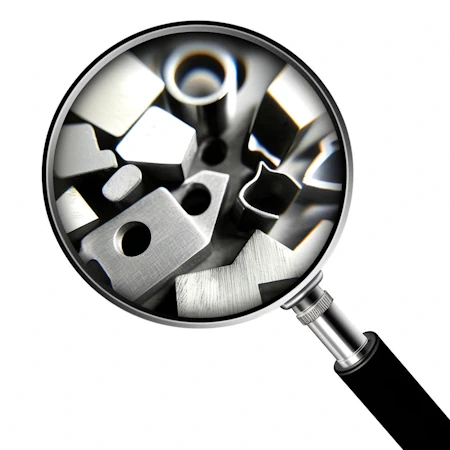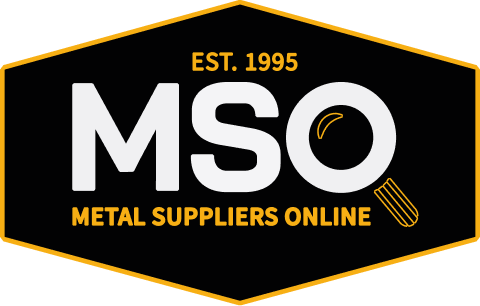Back To Browse
Super Alloy
Super Alloy Alloy 25 (L-605)
Aging Procedure
An improvement in mechanical properties, for applications where the operating temperature will be less than 1300 F, may be obtained by an aging heat treatment. This is done at 900 F after the solution annealing heat treatment has been accomplished.
Annealing Procedure
In the case of significant work hardening because of severe cold working the alloy may be solution annealed at 2200 F followed by rapid air cooling.
Applications
Gas turbine high temperature components and industrial furnace (or similar) applications as muffles, liners and structural parts.
Cold Workability
Conventional cold forming techniques may be applied.
Forgeability
Hot forging may be done in the temperature range 1850 to 2250 F. Reheat the billet or forging when the temperature drops to the point where additional forging may cause cracking. If cracks do appear they must be completely removed, usually by grinding, before heating and forging are resumed.
Formability
Conventional methods of forming by cold working, machining, welding, and forging may be used.
Hardening Procedure
The alloy is basically hardened by cold working only. It may be given an aging heat treatment that will slightly improve hardness and strength.
Heat Treatability
This alloy is normally used in the annealed condition for optimum properties. Annealing is done at 2200 F followed by rapid cooling in air or water quenching. The alloy can also be given an aging heat treatment (after solution anneal) at 900 F to improve strength for applications below 1300 F.
Hot Workability
The alloy is readily cold worked so that hot working is not normally required. However hot working can readily be done if required.
Machinability
Can be machined by conventional methods and tooling with either high speed steel tools or carbide tools. However for milling, drilling or tapping the carbide tools are NOT recommended - high speed steel tools work best.
Other Mechanical Properties
Form & Temp. Yield Str. Tensile Str. Elong. in 2%
Condition Deg.F 0.2% offset
Sheet-solution 70 65 ksi 135 ksi 60%
annealed 1000 39 106 72
1400 35 84.5 28
1800 18.2 33.5 40
Bar-solution
annealed 70 70 ksi 150 ksi 65%
1000 109 71
1400 70 35
1800 32.9 21
Creep 100 hour
Bar-solution Stress Creep-%/hr. 100 hr.Rupture Str.
annealed 1500 14 ksi .0041 22 ksi
1600 8 .0023 16.5
1700 6 .0026 12
1800 4 .0015 7.5
Principle Design Features
A cobalt based wrought alloy resistant to oxidation and carburization with good high temperature strength. The alloy is non-magnetic even in the work hardened condition.
Weldability
Welded by means of shielded metal-arc, gas tungsten-arc, and gas metal-arc techniques. Submerged arc welding should be avoided. Weld area surfaces must be clean to bright metal and free from grease or hydrocarbon products.
In sheet/strip product form the alloy can also be spot and/or seam-welded
Filler metal electrodes should be of the same cobalt base alloy composition.
Preheating and post-weld heat treatment are not normally required.
Known Forms
Bar-Hollow
Casting
Casting-Centrifugal
Flanges
Flat Bar
Foil
Forgings-Discs
Hexagon Bar
Open Die Forgings
Pipe-Seamless
Pipe-Welded
Plate
Round Bar
Round Bar - Precision Ground
Seamless Rolled Rings
Sheet
Sheet-Perforated
Shim Stock
Square Bar
Strip
Tube-Rectangular
Tube-Round (Seamless)
Tube-Round (Welded)
Tube-Square
Wire-Flat
Wire-Round
Wire-Shaped
Wire-Welding
Billet
Coil
Contour Rings
Fasteners
Fittings
Mandrel Rings
Shafts
Shapes-CD
Shapes-Extruded
Shapes-HR
Tube-Hexagonal
Tube-Octagonal
Tube-Oval/Oblong
Welded Rings
Additional Data
Specifications
670,5537,5759,5796,F90,B50T26,B50TF1,C-24252 Comp 1,R30605Dismiss
Chemical Elements
| Carbon | 0.05 - 0.15 |
| Chromium | 19 - 21 |
| Cobalt | Balance |
| Iron | 3 max |
| Manganese | 1 - 2 |
| Nickel | 9 - 11 |
| Silicon | 0.4 max |
| Tungsten | 14 - 16 |
Physical Properties
Density: 0.33lb/in³
Electrical Resistivity: 536µΩ·cm
Melting Point: 2520°F
Relative Magnetic Permeability: 1μᵣ
Specific Gravity: 9.13
Specific Heat: 0.092BTU/lb·°F
Thermal Expansion: 6.8µin/in·°F
Mechanical Properties
Modulus of Elasticity – Tension: 32.6MSI
Thermal Conductivity
| Condition | Temperature | Conductivity |
|---|---|---|
| Annealed | 70 °F | 6.5 W/m·K |
| Annealed | 600 °F | 10.5 W/m·K |
| Annealed | 1200 °F | 15 W/m·K |
| Annealed | 1800 °F | 20.1 W/m·K |
Thermal Expansion
| Condition | Min | Max | Expansion Coefficient |
|---|---|---|---|
| Annealed | 70 °F | 212 °F | 6.8 µin/in/°F |
| Annealed | 70 °F | 390 °F | 7.2 µin/in/°F |
| Annealed | 70 °F | 932 °F | 7.9 µin/in/°F |
| Annealed | 70 °F | 1472 °F | 8.8 µin/in/°F |
| Annealed | 70 °F | 1652 °F | 9.2 µin/in/°F |
Rupture Test Data
| Condition | Form | Temperature | Time | Rupture Strength |
|---|---|---|---|---|
| Test Specimen Annealed | Sheet | 1600 °F | 100 Hours | 15 KSI |
| Test Specimen Annealed | Sheet | 1400 °F | 100 Hours | 29 KSI |
| Test Specimen Annealed | Sheet | 1200 °F | 100 Hours | 48 KSI |
| Solution Annealed | Sheet | 1800 °F | 100 Hours | 7 KSI |
| Solution Annealed | Sheet | 1600 °F | 100 Hours | 29 KSI |
| Solution Annealed | Sheet | 1200 °F | 100 Hours | 48 KSI |
Mechanical Test Data
| Form | Sheet |
| Condition | Solution Annealed |
| Measurement Temperature | 70°F |
| Elongation | 64% |
| Tensile Strength | 146KSI |
| Yield Strength | 67KSI |
| Form | Sheet |
| Condition | Solution Annealed |
| Measurement Temperature | 1000°F |
| Elongation | 59% |
| Tensile Strength | 116KSI |
| Yield Strength | 36KSI |
| Form | Sheet |
| Condition | Solution Annealed |
| Measurement Temperature | 1200°F |
| Elongation | 35% |
| Tensile Strength | 103KSI |
| Yield Strength | 35KSI |
| Form | Sheet |
| Condition | Solution Annealed |
| Measurement Temperature | 1600°F |
| Elongation | 12% |
| Tensile Strength | 47KSI |
| Yield Strength | 35KSI |
| Form | Sheet |
| Condition | Solution Annealed |
| Measurement Temperature | 1800°F |
| Elongation | 41% |
| Tensile Strength | 34KSI |
| Yield Strength | 23KSI |
| Form | Sheet |
| Condition | Test Specimen Annealed |
| Measurement Temperature | 70°F |
| Elongation | 64% |
| Tensile Strength | 146KSI |
| Yield Strength | 67KSI |
| Form | Sheet |
| Condition | Test Specimen Annealed |
| Measurement Temperature | 1000°F |
| Elongation | 59% |
| Tensile Strength | 116KSI |
| Yield Strength | 36KSI |
| Form | Sheet |
| Condition | Test Specimen Annealed |
| Measurement Temperature | 1200°F |
| Elongation | 35% |
| Tensile Strength | 103KSI |
| Yield Strength | 35KSI |
| Form | Sheet |
| Condition | Test Specimen Annealed |
| Measurement Temperature | 1400°F |
| Elongation | 12% |
| Tensile Strength | 66KSI |
| Yield Strength | 38KSI |
| Form | Sheet |
| Condition | Test Specimen Annealed |
| Measurement Temperature | 1600°F |
| Elongation | 35% |
| Tensile Strength | 47KSI |
| Yield Strength | 35KSI |
Find the metal you're looking for today.

